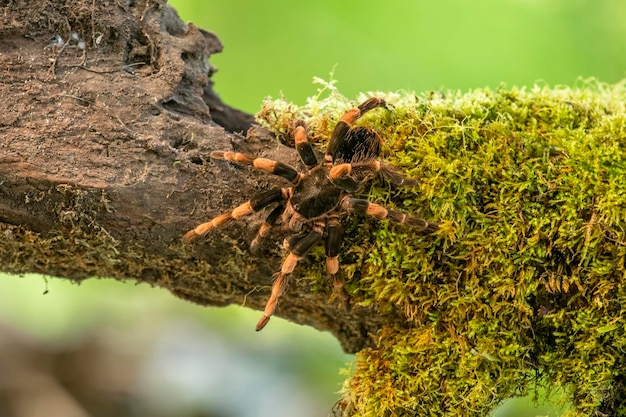Discover the Megaphobema Spider Genus: Free Stock Photo for Download
About Megaphobema
Megaphobema is a fascinating genus of spiders that belongs to the Theraphosidae family, commonly known as tarantulas. These spiders are known for their impressive size and distinct characteristics. If you have an interest in arachnology or just a love for unique wildlife, learning more about Megaphobema can be quite enriching.
Characteristics of Megaphobema
Members of the Megaphobema genus are often recognized for their robust bodies and striking appearances. Here are some notable characteristics:
- Size: Megaphobema spiders can grow quite large, making them one of the impressive members of the tarantula family.
- Habitat: These spiders are typically found in tropical regions, where they thrive in warm climates.
- Behavior: Often considered nocturnal, they exhibit intriguing behaviors that can be captivating to observe.
Distribution and Habitat
The Megaphobema genus primarily inhabits areas in Central and South America. They are often found in forests or shrublands, which provide the ideal conditions for their survival. The environment plays a crucial role in their life cycle, influencing factors such as diet, breeding patterns, and growth.
Diet
Like many tarantulas, Megaphobema spiders are carnivorous. Their diet typically consists of:
- Insects
- Small mammals
- Other small creatures that they can overpower
Their hunting style involves ambushing prey, using their speed and agility to capture food efficiently.
Understanding Their Behavior
Megaphobema spiders have unique behaviors that can be quite interesting. They are generally shy and prefer to stay hidden in their burrows or under foliage. This modest demeanor doesn't mean they are not fascinating; their habits and interactions with the environment can be quite intricate.
Life Cycle
The life cycle of Megaphobema involves several stages, including egg, juvenile, and adult. Each stage has its specific characteristics and requirements for growth:
- Egg Stage: Females produce eggs in silken sacs, often protecting them diligently.
- Juvenile Stage: Young spiders go through molts as they grow, learning vital survival skills.
- Adult Stage: Upon reaching maturity, they become capable of breeding and continue the cycle.
Conclusion
Understanding the Megaphobema genus gives insight into the complex world of spiders. Whether you are a budding arachnologist or someone simply curious about nature, these spiders offer a glimpse into the beauty and diversity of wildlife. Learning about their habits, habitats, and life cycles can deepen your appreciation for these remarkable creatures.












